
The Folies Bergère is a cabaret music hall, located in Paris, France. Located at 32 Rue Richer in the 9th Arrondissement, the Folies Bergère was built as an opera house by the architect Plumeret. It opened on 2 May 1869 as the Folies Trévise, with light entertainment including operettas, comic opera, popular songs, and gymnastics. It became the Folies Bergère on 13 September 1872, named after nearby Rue Bergère. The house was at the height of its fame and popularity from the 1890s' Belle Époque through the 1920s.

The Soft Skin is a 1964 French-Portuguese romantic drama film directed by François Truffaut and starring Jean Desailly, Françoise Dorléac, and Nelly Benedetti. Written by Truffaut and Jean-Louis Richard, it is about a married successful writer and lecturer who meets and has an affair with a beautiful flight attendant half his age. The film was shot on location in Paris, Reims, and Lisbon, and several scenes were filmed at Paris-Orly Airport. At the 1964 Cannes Film Festival, the film was nominated for the Palme d'Or. Despite Truffaut's recent success with Jules and Jim and The 400 Blows, The Soft Skin did not do well at the box office.

The Chorus is a 2004 French musical drama film directed by Christophe Barratier. Co-written by Barratier and Philippe Lopes-Curval, it is an adaptation of the 1945 film A Cage of Nightingales. The story is inspired by the origin of the boys' choir the Little Singers of Paris.

Downhill is a 1927 British silent drama film directed by Alfred Hitchcock, starring Ivor Novello, Robin Irvine and Isabel Jeans, and based on the play Down Hill by Novello and Constance Collier. The film was produced by Gainsborough Pictures at their Islington studios. Downhill was Hitchcock's fourth film as director, but the fifth to be released. Its American alternative title was When Boys Leave Home.
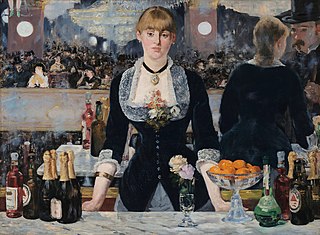
A Bar at the Folies-Bergère is a painting by Édouard Manet, considered to be his last major work. It was painted in 1882 and exhibited at the Paris Salon of that year. It depicts a scene in the Folies Bergère nightclub in Paris. The painting originally belonged to the composer Emmanuel Chabrier, a close friend of Manet, and hung over his piano. It is now in the Courtauld Gallery in London.

Magyk is a fantasy novel written by English author Angie Sage. It is the first book in the seven-book Septimus Heap series. The sequel, Flyte was released in March 2006, Physik in March 2007, Queste in 2008, Syren in September 2009, Darke in July 2011, and Fyre in 2013. The book cover of Magyk alludes to the diary that the ExtraOrdinary Wizard Marcia makes for her apprentice, Septimus Heap. The cover also depicts Septimus's Dragon Ring, rendered as if it were sitting atop the diary.
HMS Surprise was the name the Royal Navy gave to the French Navy's corvette Unité after Unité's capture in 1796. Unité was launched on 16 January 1794. Surprise gained fame in 1799 for the recapture of HMS Hermione. In 1802 Surprise was sold out of the service.
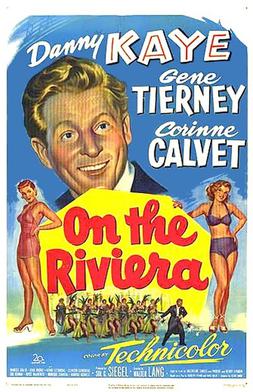
On the Riviera is a 1951 Technicolor musical comedy film made by 20th Century Fox. Directed by Walter Lang and produced by Sol C. Siegel from a screenplay by Valentine Davies and Phoebe and Henry Ephron, it is the studio's fourth film based on the 1934 play The Red Cat by Rudolph Lothar and Hans Adler. This version stars Danny Kaye, Gene Tierney and Corinne Calvet, with Marcel Dalio, Henri Letondal and Sig Ruman.

La Cité de la peur, also known as Le film de Les Nuls, is a 1994 French comedy film written by and starring Chantal Lauby, Alain Chabat and Dominique Farrugia of the comedy group Les Nuls, and directed by Alain Berbérian in 1994.
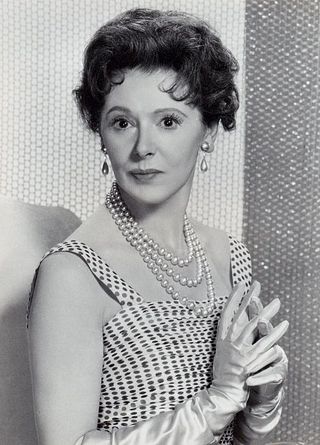
Isabel Jeans was an English stage and film actress known for her roles in several Alfred Hitchcock films and her portrayal of Aunt Alicia in the 1958 musical film Gigi.

The Dolly Sisters is a 1945 American Technicolor biographical film about the Dolly Sisters, identical twins who became famous as entertainers on Broadway and in Europe in the early years of the 20th century as Jennie and Rosie Dolly, Hungarian-born entertainers. It starred Betty Grable as Jenny, June Haver as Rosie and John Payne as Harry Fox.

That Night in Rio is a 1941 Technicolor American musical comedy film directed by Irving Cummings and starring Alice Faye, Don Ameche and Carmen Miranda. It is one of several film adaptations of the 1934 play The Red Cat by Rudolf Lothar and Hans Adler. Others are Folies Bergère de Paris (1935) and On the Riviera (1951).

La fauvette du temple is an opéra comique in three acts of 1885, with music by André Messager and a French libretto by Paul Burani and Eugène Humbert.
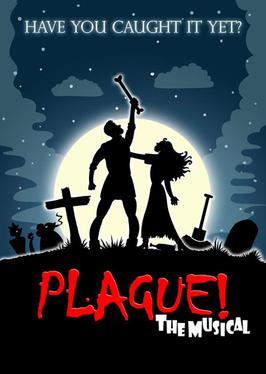
Plague! The Musical is a musical with book, music and lyrics by David Massingham and Matthew Townend. It is a dark comedy based loosely on the events of the Great Plague of London in 1665–1666.

The Triumph of the Rat is a 1926 British silent film drama, directed by Graham Cutts for Gainsborough Pictures and starring Ivor Novello, Isabel Jeans and Nina Vanna.
The Return of the Rat is a 1929 British silent drama film directed by Graham Cutts and starring Ivor Novello, Isabel Jeans and Mabel Poulton. It was made by Gainsborough Pictures at their Islington Studios. It was also released with a music and effects soundtrack for cinemas wired for sound.
Sleeping Car is a 1933 British romantic comedy film directed by Anatole Litvak and starring Madeleine Carroll, Ivor Novello and Laddie Cliff.

The Rat is a 1937 British drama film directed by Jack Raymond and starring Anton Walbrook, Ruth Chatterton, and René Ray. It is based on the play The Rat by Ivor Novello which had previously been made into a 1925 film The Rat starring Novello. It was made at Denham Studios by Herbert Wilcox Productions.
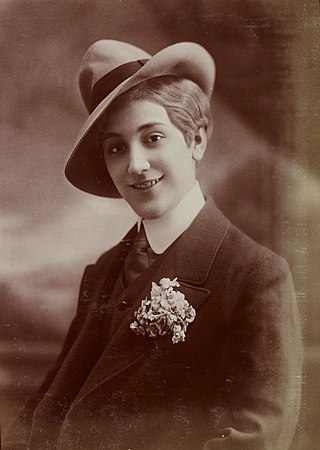
Aimée Campton or Miss Campton was a dancer, music hall artist, postcard beauty and a French actress of English origin. A silent film actress, she played the lead role in a series of French-made Maud films in the 1910s.

Yvonne Marie Louise Odette Renée Ménard was a French burlesque dancer. She was known for her roles at the Folies Bergère in shows such as Une Vraie Folie, in films such as Les nuits de Paris [Fr], as well as for being the cover model of Playboy's third issue in February 1954. She is listed in the brief description of the Folies Bergère theatre in the 28th and 29th editions of Bienvenue à Paris.

















